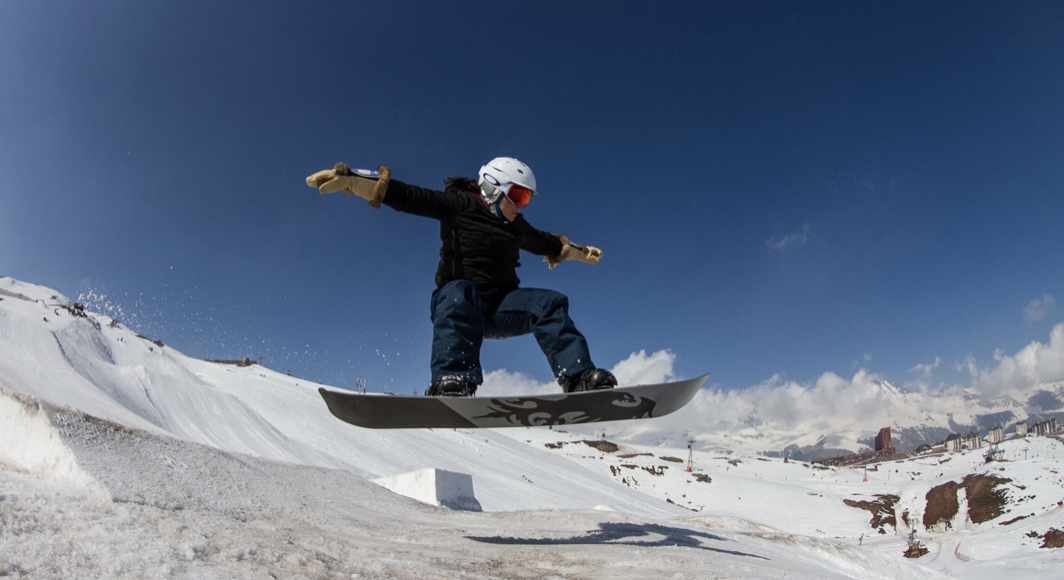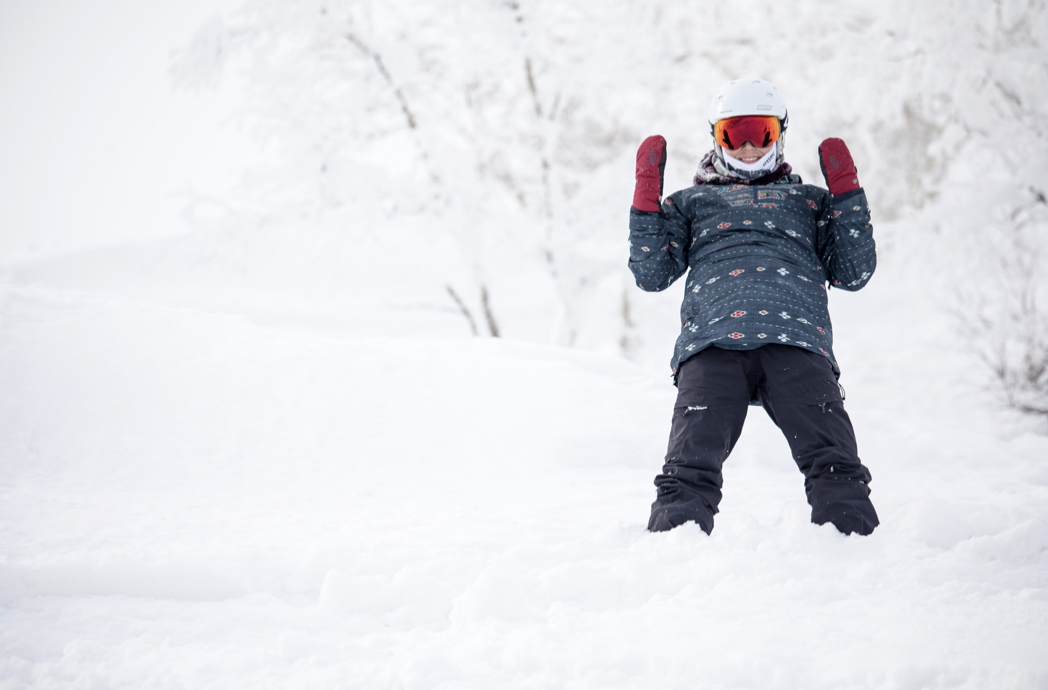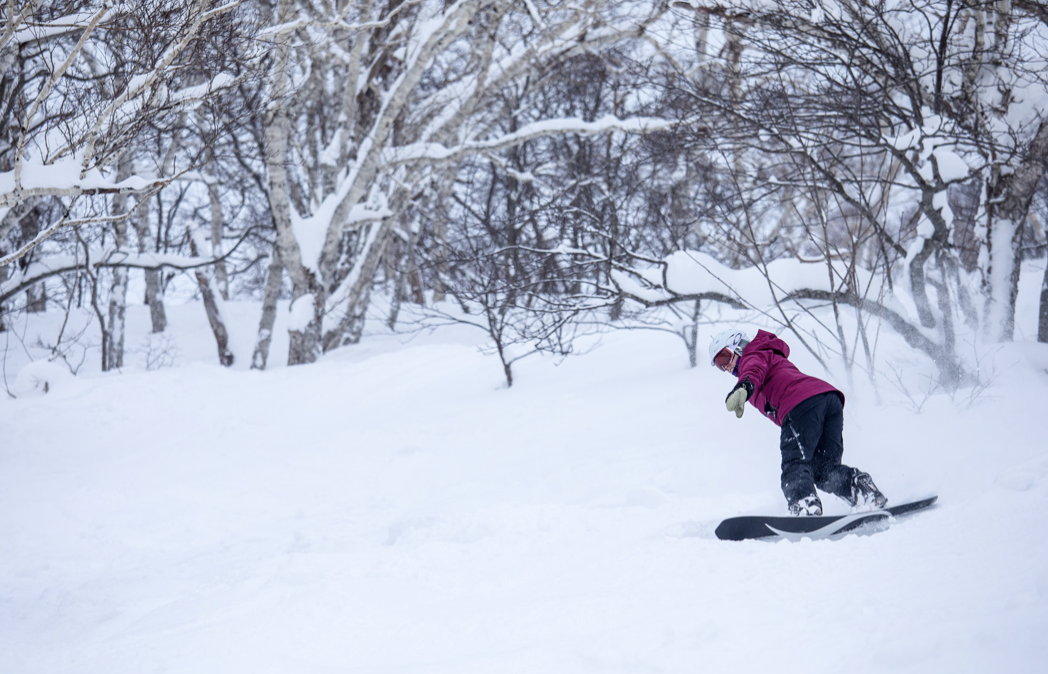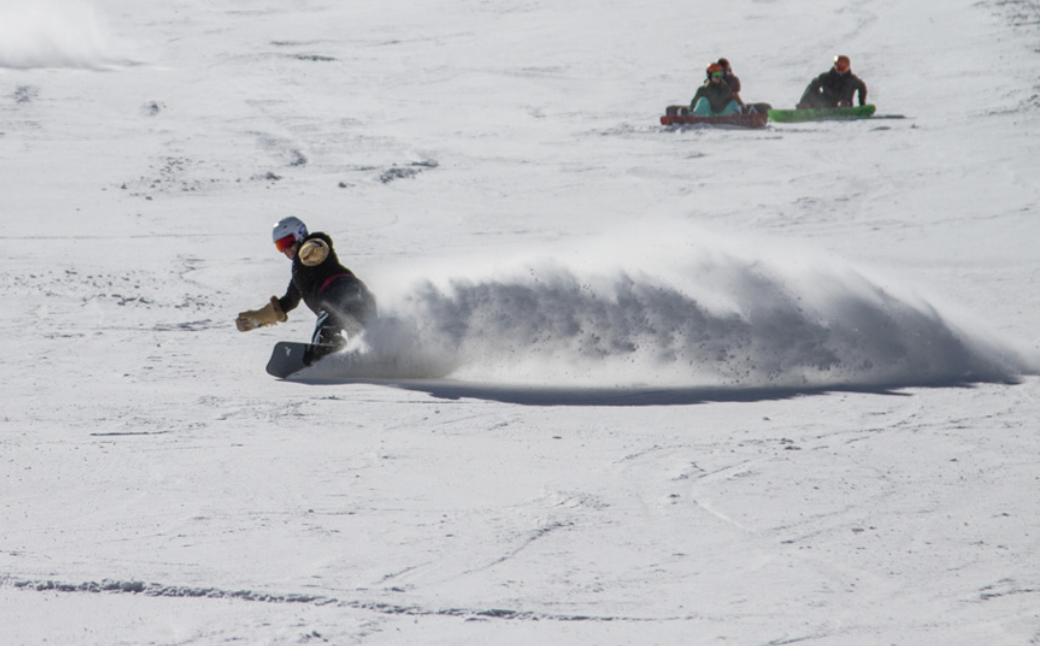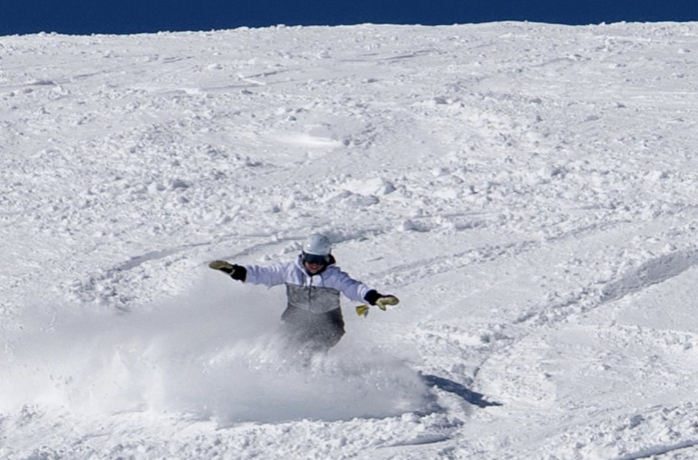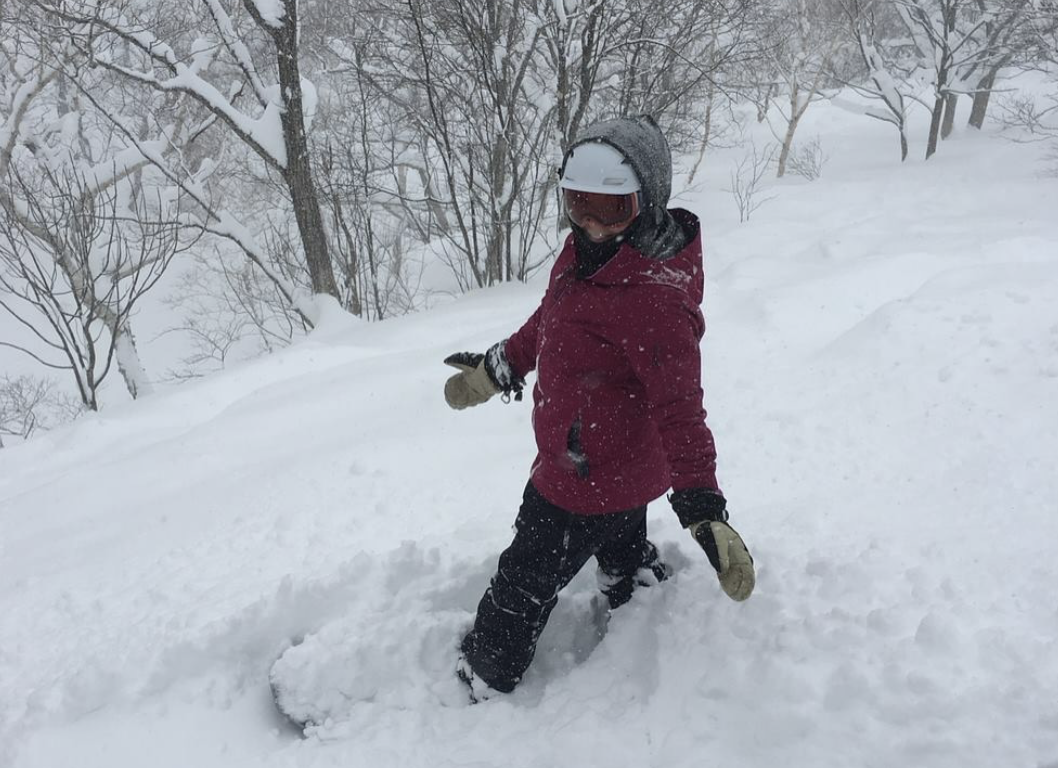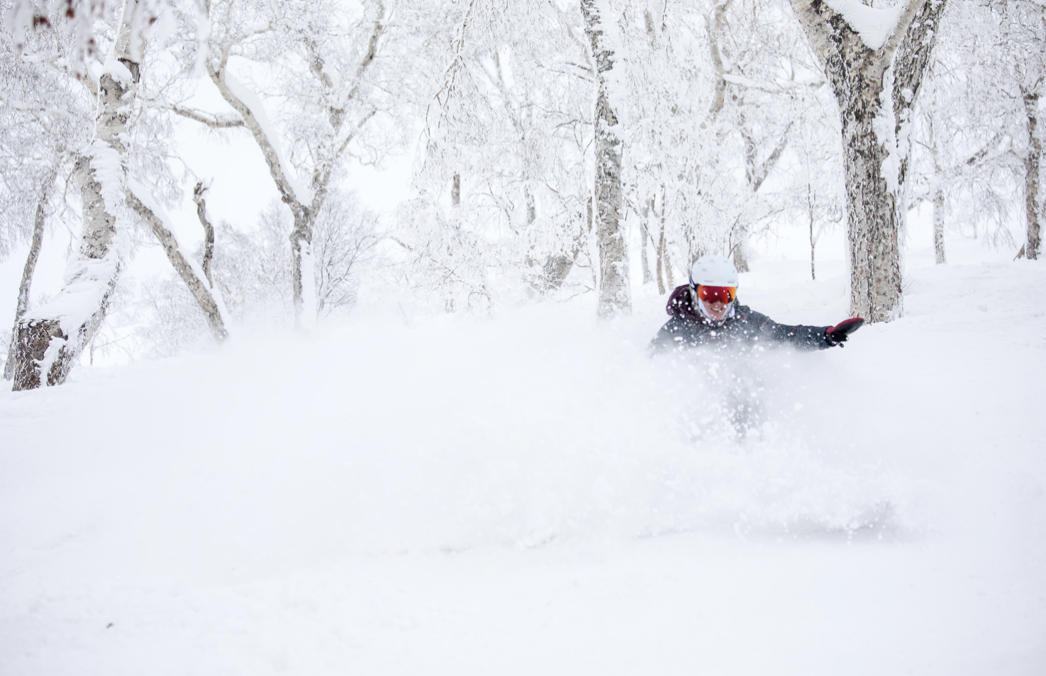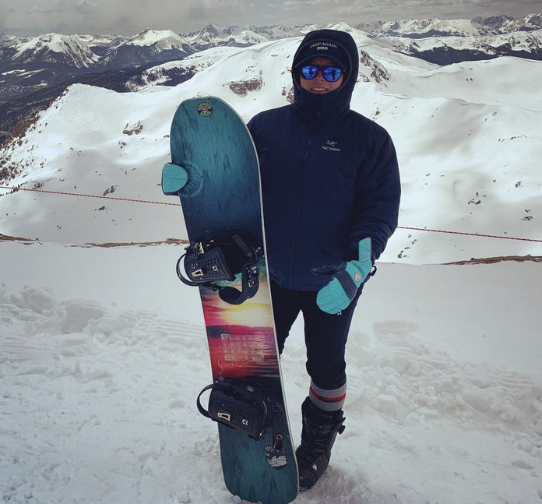Snowboarding Tips for Beginners
The popularity of snowboarding keeps on growing, being the 13th fastest-growing sport in the U.S.
The snowboard season in North America typically begins in late November and lasts until late April. If this is a winter sport you have wanted to try but haven't dared yet, the time is now.
To help guide you step-by-step as a beginner, HECHO asked Mekayla Cortez, HECHO Advisory Board Member, for tips. Mekayla is an avid snowboarder who has surfed snowy slopes all over the world, including Japan, South America, and, of course, the Rocky Mountains, which are in her own backyard.
How did you start snowboarding?
I first learned to ski with a school program in 4th-5th grade. We would ride the school bus to a small resort here in Colorado and take lessons. I think we did this 1-2 times a year. My mom would come and chaperone and take ski lessons as well. She never really graduated from the bunny hill to the big hill, but she was there trying, and I remember that with such fondness. I skied on and off from childhood to college, but I gave it up because I wasn’t enjoying it like I thought I should be.
I loved being on snow, but I wasn’t a great skier. When I was 27, I found myself at a transitional point in my life and, on a whim, purchased a season ski pass with a unique offering. You could learn to ski or snowboard with three free group lessons, including equipment rentals and tickets.
Once I graduated from the three lessons, I got a season pass to Keystone, Breckenridge, and Arapahoe Basin. That pass deal cost $250, which at the time was a ton of money to me, but I pulled out my credit card and signed myself up. After my first lesson, I immediately bought a snowboard, boots, and bindings.
I completed my three lessons and began going up to the resort as often as I possibly could. I snowboarded about 40 times that first year, which became my yearly benchmark – to ride 40 days a season. I have mostly hit that goal every year except the Covid years. That $250 investment in myself totally changed my life in a very positive way.
What was the best and the biggest challenge about getting into snowboarding?
The best about getting into snowboarding has been the confidence it’s given me to do hard things. The freedom I feel when standing on top of a snow-covered peak, knowing I can safely and confidently get down to the bottom, is the best feeling. A perfectly snow-covered ski run is like a blank canvas on which you can carve your name in a thousand different ways.
Snowboarding offers an incredible opportunity to make new friends and meet people. I love sharing a quick conversation on the lift ride up the mountain with a stranger in search of the same feeling of freedom. It’s such a joyful experience!
For me, the biggest challenge about getting into snowboarding was finding people to go with. When you’re first starting out, it’s hard to find people at your same beginner level who want to make the effort to get up early and go to the mountains.
Money is also a very big challenge. Seek out groups that offer learn-to-ride programs at a discounted rate, or connect with your Latino community to see if there are organizations that sponsor beginner lessons and equipment rental. You will be surprised by how many organizations support the effort to get Latinos into winter sports like snowboarding.
Transportation to and from the mountains can also be an obstacle for many people. Having a safe ride to and from the resort is a huge consideration. Carpool if you can. Here in Colorado, we have the Bustang or the Snowstang, which offers ticketed bus rides from Denver to various resorts with an all-inclusive price for the bus ticket and lift ticket.
What are your recommendations for anyone who has never snowboarded but wants to learn?
Take a lesson! The general rule of thumb is three full day lessons to learn basic skills and be able to connect heel and toe edge turns. When assessing challenging terrain or attempting a difficult run, I always rely on those foundational skills that I learned when I first started snowboarding and took those first three snowboarding lessons. Basic, fundamental skills are important. I recommend taking a lesson with a certified instructor, NOT a friend!
Loading and offloading the chairlift can be intimidating. Part of the learning curve is knowing how to load and offload safely. Taking a lesson can eliminate the anxiety of learning how to do this correctly.
Be patient with yourself. Take it slow. Take lots of breaks. Don’t pressure yourself.
Learning to fall and get back up can be difficult. There is A LOT of falling to be expected when learning to snowboard. When you take a lesson, you will get coaching on how to fall safely. Taking time to stretch before and after can help, but expect your body to be sore the first few times.
The best way to improve is to ride with more experienced people than you. It can be difficult to overcome the apprehension of riding with more experienced snowboarders. It’s hard not to compare yourself or feel intimidated. Getting that first year behind you is challenging, but once you start seeing your skill progression and become a more intermediate/advanced rider, your confidence starts to shine, and the experience gets more and more fun.
Enjoy the experience of the place. Take a moment to appreciate the mountains and the snow on the ground. Breathe in the clean air and stop to look around.
Don’t be afraid to try.
Snow sports equipment can be expensive. What are your recommendations?
The cost of snowboarding is a barrier for many people. I have often had to scrape together money to upgrade equipment and purchase lift tickets. It's not always easy. I have learned a few tricks that help me save a few bucks here and there. Here are some tips:
Pass and ticket sales begin around Labor Day, which is generally the cheapest time to buy pass and ticket products during the ski/snowboard season. Prices go up as the season progresses. The earlier you can buy a pass or lift ticket, the better/cheaper. If you go with someone who has a season pass, you can generally purchase a discounted buddy ticket with their season pass. Also, some resorts have volunteer opportunities to help with various ski race events in exchange for free lift tickets.
Having good equipment is important, but it's not necessary to buy everything brand new. Rent equipment the first few times.
If snowboarding is something you like and want to continue with, purchase comfortable boots that fit your feet. Any good snowboard shop can help get you sized for boots. Boots are the one thing that I do recommend buying new if you can.
If you research online, you can always find good deals on gear. I also like to buy gear in the off-season months when things are heavily marked down.
Thrift stores and online marketplaces are also great places to get the clothing you need for a day on the slopes.
You can always demo or rent bindings and snowboards from any local snowboard shop. This is a good way to try out different equipment before you commit to buying it. Many snowboard manufacturers, like Never Summer and Weston, offer free demo days at resorts where you can try out the latest snowboards. Research online to discover where demo days are happening at your local resorts.
When you finally decide to purchase a snowboard, I recommend getting something more advanced than where you are at so you have something to grow into. Your skills will advance quickly, and you will be happy you have a snowboard to match your progression and skill level.
What are the best months for snowboarding?
The best months for snowboarding are all of them! Colorado has about a 6-7 month ski/snowboard season from late October to early May. We have also been known to snowboard as late as the 4th of July. If you are new to snowboarding, any day with a decent amount of snow on the ground and when the weather is sunny and nice is a perfect day to learn to ride.
I recommend avoiding trying to learn in excessively cold, icy, or windy conditions – you won’t enjoy yourself! For me, and the type of riding I like to do, the sweet spot is typically around February. Around this time, the base is pretty built up, meaning there’s lots of snow coverage and fewer rocks exposed. It’s the pre-curser to Spring, and conditions are generally really good.
Snow conditions are, of course, entirely dependent on Mother Nature. As we all know, the climate is rapidly changing.
It’s important to remind ourselves that the future of snow sports is at risk with our climate in crisis the way it is. Water resources and the impacts of artificial snowmaking are issues to be aware of. We must demand action from our elected public leaders on climate policies and conservation issues affecting winter sports.
What are your favorite places to snowboard, and why?
My favorite local places to snowboard are smaller resorts like Loveland Ski Area, Eldora, Echo Mountain, Arapahoe Basin, and Ski Cooper. I like the old-school feel of smaller resorts. I think it’s a more personal experience when you explore a smaller resort. I feel like smaller resorts are also a little less intimidating for beginners.
Are there any other recommendations, tips, or inspiration for anyone, including other Latinos and Latinas?
My biggest tip is to have fun!
Some general advice is to avoid planning snowboard trips on major holiday weekends. Resorts are busy, and lift lines are long. It’s not worth it!
Be patient with yourself while learning. Focus on the task. The first days will be challenging, but don’t give up!
Do some research beforehand to understand what the resort you are visiting offers.
Check the forecast and plan accordingly for the weather.
Wake up extra early! Get on the road as early as possible to avoid traffic and arrive relaxed and not rushed.
Take breakfast with you or eat breakfast at the resort. Take snacks. Pack a lunch to save money. If you are at a resort where you can park close to the base area, pack a small cooler and leave it in the car for breaks and lunch.
Start hydrating the day before.
Be aware of altitude sickness and symptoms.
Use sunscreen always!
Keep your boots warm! NEVER leave your boots in the car overnight. Your boots should always be warm before you put them on your feet.
Invest in a single pair of knee-high ski socks. Your boots should provide plenty of insulation and warmth. Never wear more than one pair of socks. If your toes are cold, stop and go inside to warm up and adjust.
Proper layering is essential. Avoid cotton. Base layer, insulting layer, waterproof shell, face mask, goggles, gloves, and glove liners.
When learning to snowboard, you will be sitting or kneeling on the snow quite a bit. You definitely want to make sure you wear snow pants or waterproof pants.
Make adjustments whenever they are needed. Whether it’s your layers, your boots, or your equipment. Take time to make sure you are comfortable.
Rent a helmet, and always put lids on kids.
Know your limits and trust your ability.
Don’t forget to wear comfortable slip-on shoes after a long day of riding.
Remember that ANY DAY ON THE MOUNTAIN COUNTS! Even if you only do one single run or none at all, it counts. Just the effort to show up and be there is something to be proud of yourself for.
Once you become an expert snowboarder, hold the door open for other beginners interested in trying. Reflect back on what it was like to be a beginner and share some of your own tips and tricks.



